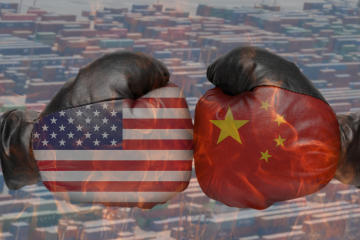The moral assumptions embedded in economic models of climate change
CLIMATE CHANGE is many problems in one. Developing and deploying zero-carbon technologies is a formidable challenge. So is the politics of co-ordinating disparate groups to achieve the necessary collective action. In America, where the Republican Party persists in climate denialism, it is an epistemological pickle. Policymakers met in Katowice, Poland, this week to discuss implementing the climate deal signed three years ago in Paris, from which America withdrew under President Donald Trump.
Behind all this, however, lies an economic problem. Humanity must work out how many resources should be diverted from other, valuable uses—from life-enriching consumer goods to funding for pensions—to the task of limiting global warming. These calculations may look bloodless, but they are built on weighty moral assumptions, namely, how to value other people’s lives. Though it is hard to know what might finally impel humanity to take the threat of climate change seriously, speaking more plainly about its moral costs might help.
The crux of the challenge is straightforward. Modern economic activity generates carbon dioxide, which accumulates in the atmosphere and increases the global temperature via the greenhouse effect. Higher temperatures impose large, growing and long-lasting costs on humanity. The world has already heated up by around 1°C, compared with pre-industrial times. Warming of 3°C relative to that benchmark by the end of this century would be likely to reduce economic output by trillions of dollars and cause tens or hundreds of millions of additional deaths, compared with a rise of just 1.5°C. But limiting global warming to that level would require the use of resources that might otherwise boost current well-being. Taxes might have to rise to pay for investment in zero-carbon electricity generation, for example. Over the past few decades economists have been working to figure out how much it makes sense to forgo today in order to have more jam tomorrow.
The models they use have huge numbers of variables. Easily the most consequential is the discount rate, which captures how much more lightly welfare in the future is weighed compared with welfare today. People are impatient. Most, if asked, would prefer a chocolate bar today to one tomorrow, and would therefore need to be offered more than one if they are to be persuaded to wait. The discount rate represents how much the value of a present good fades as it is delayed into the future.
The power of compounding, and the long time horizons involved in climate change, mean that the choice of discount rate matters hugely when weighing policies against one another. Using a discount rate of 1%, someone might be willing to forgo as many as 37 chocolate bars today in order to have 100 a century from now. But at a discount rate of 4%, today’s sweet-toothed rational actor would be willing to forgo just two.
William Nordhaus, one of the winners of this year’s Nobel prize for economic sciences, recommended gradual, modest reductions in carbon emissions in a landmark book on the economics of climate change published in 1994. A report by Lord Nicholas Stern for Britain’s government in 2006 demanded immediate and dramatic efforts, including spending in advanced economies equivalent to 1-2% of GDP. Their analytical approaches differed in a number of ways, but the stark difference in their conclusions resulted mostly from the use of different discount rates.
Where do such rates come from? Mr Nordhaus derived his from observations of real-life human preferences, as captured in market interest rates and other studies of decision-making. But it is far from clear that the rates people have in mind when deciding whether to attend university or to save for retirement should be applied to questions of social policy that will affect billions of lives. Climate policy does not simply shift a bit of ill-defined utility from one pile to another, after all. It determines how much life-threatening environmental harm the current generation will impose on scores of future ones.
Philosophers are accustomed to discussions about how to value lives distant from our own in time and place; economists are not. But in a new book, “Stubborn Attachments: A Vision for a Society of Free, Prosperous, and Responsible Individuals”, Tyler Cowen of George Mason University argues that the moral status of human lives ought not to be traded off over time in the same way that a bond portfolio might be. He puts the results of discounting in evocative terms: given a 5% rate of discount, one human life today is worth 132 a century hence. Is it really ethically acceptable to save one life now at the expense of so many in the future? The lives of humans born decades from now might be difficult for us to imagine, or to treat as of equal worth to our own. But our own lives were once similarly distant from those taking their turn on Earth; the future, when it comes, will feel as real to those living in it as the present does to us. Economists should treat threats to future lives as just as morally reprehensible as present threats to our own.
The future ain’t what it used to be
That need not imply the use of a 0% discount rate. As Partha Dasgupta of the University of Cambridge has pointed out, there is a risk that humanity will no longer be around a few centuries from now—for example, if a large comet hits the Earth, or if supervolcanoes erupt and cloak the Earth in choking debris. It makes sense to discount future lives by a tiny amount to take account of the possibility that they will never come to be. That would nonetheless mean that humanity ought to be willing to bear substantial costs now to reduce eventual climate harms.
A shift in our view of future humans might not be enough to persuade humanity to get its act together on climate change. Moral logic often fails in the face of distance—geographical, cultural and temporal. But it would still be right to give future humans their due, and adjust economic models accordingly.
This article appeared in the Finance and economics section of the print edition under the headline “Future lives matter”









